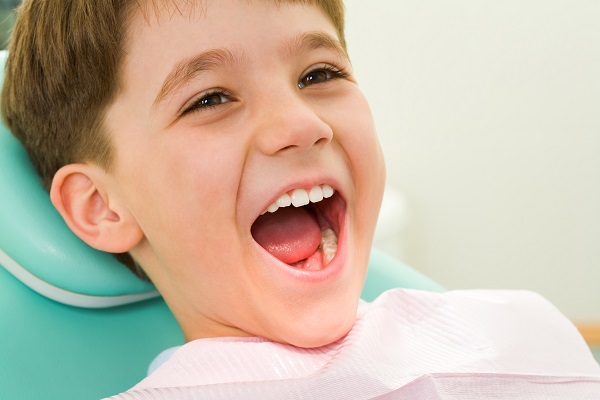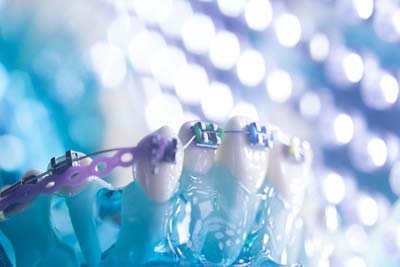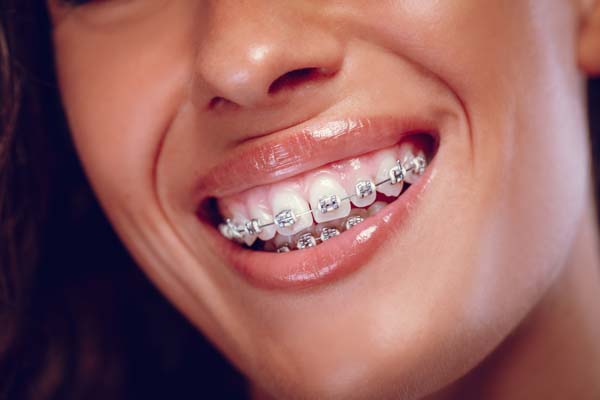How to Know if Your Child Should See an Orthodontist

While regular brushing and flossing can help prevent cavities and gum disease, even children with the most adept dental hygiene habits may need to make a trip to the orthodontist for braces or aligners. According to the American Association of Orthodontists, there are approximately 4 million Americans currently wearing braces, 75% of whom are children under the age of 18. Parents are often confused about when orthodontic treatment is needed and how to tell there is a problem in the first place. Continue reading to learn about common issues to look out for and at what age a child should receive care.
What problems should children see an orthodontist for?
There are several common problems that a child may require orthodontic care for:
- Crowding or spacing issues
- Overbite
- Underbite
- Crossbite
- Open bite
- Impacted canines
- Protrusion
- Mismatched dental midlines
Even teeth that appear straight can have underlying complications that require treatment. Teeth and jaw issues are very frequent and can affect anyone. For many people, misalignment or a bad bite are caused by genetic factors, but a poor diet, thumb-sucking, poor dental hygiene or injuries can also be a factor.
Diagnosing common problems
While some issues might be visibly noticeable to a parent, it is common for problems to be found during a dental exam. Most likely, the dentist will recommend the child receives orthodontic care. During the visit, the orthodontist might request X-rays and pictures of the child's teeth and may have a mold made of the mouth. Using this information and a visual examination of the mouth, the dentist can identify many common issues and create a treatment plan.
At what age should children visit an orthodontist?
While many parents assume that children do not need to visit the orthodontist until the child loses all baby teeth or reaches the teen years, the American Association of Orthodontics actually recommends that a visit is made by age 7. Most children lose the front eight baby teeth between 6 and 8 years old. Some children may need to see the orthodontist even earlier if problems are found during a dental exam. In some cases, the orthodontist may identify an issue early on and choose the monitor the child's teeth and jaws before starting treatment.
Benefits of early orthodontic care
Receiving orthodontic care at an early age has many benefits, even if permanent teeth have not emerged yet. For one, the orthodontist might be able to tell if permanent teeth are coming in incorrectly using an X-ray and can guide the teeth into proper position. In some situations, extracting a baby tooth might be necessary to allow enough room for a permanent tooth to come in. Treatment might be quicker and easier at a younger age, and there are issues that may only be fixed before the face and jaw finish growing.
Conclusion
Parents should always take children to see an orthodontist if they notice that the teeth appear misaligned or if the dentist identifies any potential problems during a dental exam. Additionally, all children should see an orthodontist at least once at the age of 7 to help catch any issues early on.
Request an appointment here: https://www.getorthosmiles.com or call Ortho Smiles at (954) 271-8073 for an appointment in our Pembroke Pines office.
Check out what others are saying about our services on Yelp: Read our Yelp reviews.
Recent Posts
Having crooked teeth can be problematic on so many levels, but thankfully there are a variety of teeth straightening options for you. Food often gets stuck in between crooked teeth, and they aren’t the greatest confidence booster either. In this article, we discuss some of the teeth straightening options that exist. Being aware of all of…
Discovering you need orthodontic care does not have to be a worrisome situation. The orthodontist will help you the whole way, and the staff will guide you on any concerns, ranging from financing to maintenance. If you have booked an appointment with an orthodontist, this piece provides a guide on what to expect and questions…
Most parents are familiar with traditional orthodontic treatment that usually starts when a child hits adolescence. Typically, orthodontics are needed to correct gaps, bite issues or crowding issues. However, in some cases, early orthodontic treatment may be needed. Early orthodontic treatment is not limited to one type. Each child has varying needs that serve as the…
We all want our children to have straight, healthy teeth; clear braces for teens (or invisible braces) for teens are an excellent solution compared to traditional braces. Thankfully, modern dentistry has made major improvements in braces technology that makes them more effective and more comfortable, and invisible. Now there’s no longer a need to worry…





